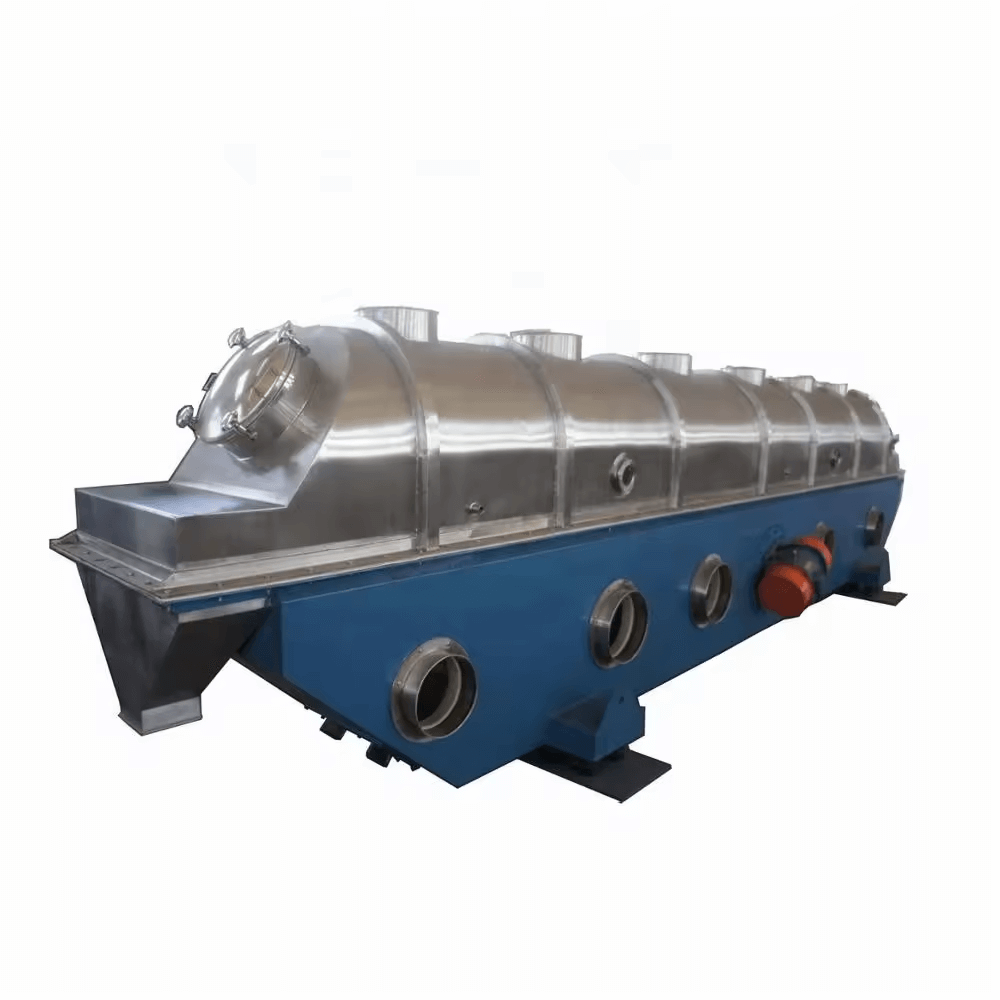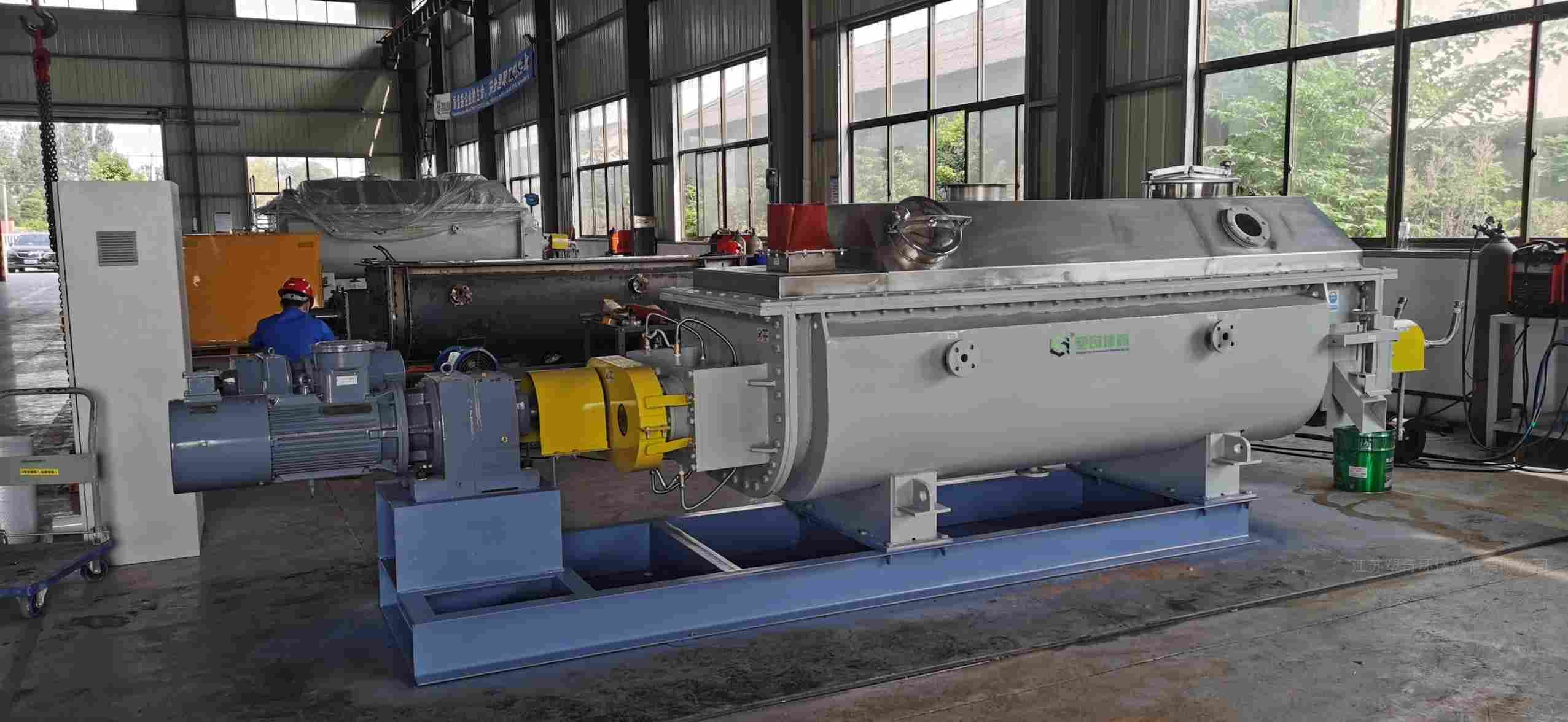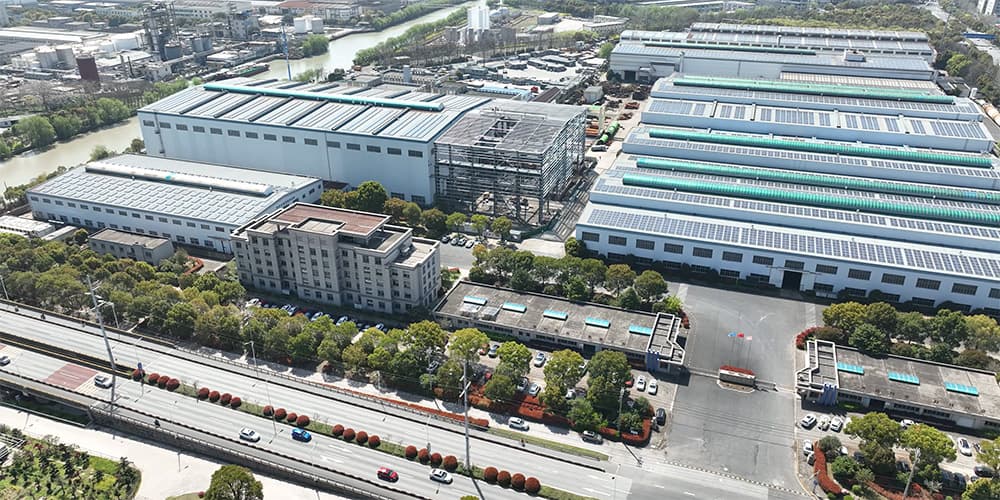Fluid Bed Dryer Testing & Process Development in the Innovation Center
When purchasing large-scale industrial equipment, ensuring that it meets specific process and material requirements can be a huge challenge. This is especially important with fluid bed dryers, as they are widely used in the chemical, fertilizer, and mining industries to dry a variety of bulk solid materials.
While the fluid bed dryer is highly adaptable, ensuring that it is perfectly matched to a particular application and correctly designed to meet the process objectives requires thorough pre-testing and process development work. To reduce investment risk and obtain critical scale-up data, TONGLI offers Innovation Center testing services, giving customers the opportunity to evaluate the performance of their fluid bed dryer prior to actual purchase.

Why Fluid Bed Dryer Testing?
To confirm suitability: Different materials require different drying conditions. Through the test, we can understand whether your material is suitable for fluidized bed drying, and what problems will be encountered in the drying process.
- Optimize process parameters: Just like cooking has the best fire, drying also has the best temperature, wind speed and other parameters. Through testing, we can find the most suitable drying process for your material and improve product quality.
- Reduce the production risk: Before large-scale production, small-scale test can find the problem early and avoid unnecessary loss.
Fluidized bed dryer capacity test
Fluid bed dryer testing is usually divided into two stages: batch testing and pilot testing. Batch testing is used to confirm initial feasibility and to understand basic material properties such as minimum fluidization rate and heat transfer coefficient. Pilot testing focuses on optimizing process parameters such as air flow rate, bed distribution, residence time, temperature profile, etc. to achieve the desired product specification.
During the testing process, a number of product metrics can be evaluated, such as moisture content, bulk density, fluidity, strength, etc. The process can also identify and resolve potential problems. Potential problems, such as material leakage or short-circuiting, can also be identified and resolved. In addition, testing provides important information for estimating operating costs and determining pretreatment needs.
Batch Fluidized Bed Dryer Testing
Batch-scale testing is typically used to confirm that a representative source of feedstock can be dried in a fluid bed dryer. Batch scale testing also identifies the need for pretreatment, such as particle size reduction or material conditioning.
Batch scale testing also provides an important opportunity for manufacturers to understand how their material responds to the fluidized bed reaction and what modifications may be required to obtain optimal results. Two fundamental data points established during batch testing provide the basis for further development work:
- Minimum Fluidization Velocity: the minimum velocity at which fluidization of the material bed is achieved.
- Heat transfer coefficient: the rate of heat transfer between the material and the surrounding gas.
At this stage, various fluidization regimes may be tried to determine the most suitable method for drying a particular material. Chop size and the amount of distillation that may occur may also become apparent at this stage.
Pilot Scale Fluidized Bed Dryer Testing
While batch-scale testing focuses on establishing feasibility and familiarizing the material and its response to fluidized drying, pilot-scale testing focuses on refining the drying process and collecting the necessary process data.
Pilot scale testing is a critical part of the transition from laboratory results to industrial production. In this phase, we will fully optimize the drying process by simulating the actual production environment. By adjusting various process parameters, such as temperature, air velocity, material residence time, etc., we can find the most suitable drying process for the material to ensure stable and consistent product quality. At the same time, we will collect a large amount of data, such as moisture content, particle size distribution, etc., and use these data to analyze and provide a basis for subsequent equipment design and process control.

Optimization of fluid bed drying process: key parameters and performance indicators
The core of the optimization of fluid bed drying process lies in the precise control of key process parameters to produce products that meet the specifications. The main control parameters include:
- Gas flow rate and distribution
- Bed configuration and filling rate
- Material inlet and outlet rates
- System pressure and temperature profile
- Material residence time
By systematically adjusting these parameters, it is possible to optimize a number of product performance indicators such as:
- Water content and homogeneity
- Particle density and strength
- Flow properties
- Dust control efficiency
During the optimization process, the following aspects should be focused on.
- Energy analysis: Evaluate the energy consumption for different combinations of parameters to find the best energy efficiency solution.
- Pre-treatment requirements: Determine the need for pre-treatment of raw materials, such as crushing, granulation, etc.
- Equipment matching: according to the optimized process parameters, select or improve the appropriate equipment configuration.
- Environmental requirements: pay attention to waste gas treatment and other environmental indicators to ensure compliance with emission standards.
- Problem diagnosis: Identify and solve problems that may occur in the process, such as material short circuits or leakage.
In addition, new materials such as biomass may require more in-depth adaptability studies. Through comprehensive parameter optimization and performance evaluation, the efficiency and product quality of the fluid bed drying process can be significantly improved, bringing substantial economic benefits to enterprises.

Commonly tested materials in fluid bed dryer
Because of its high efficiency and flexibility, fluid bed dryer is widely used to dry materials in various industries. From the traditional chemical industry, food industry, to the emerging biomass energy, new energy materials field, fluidized bed drying plays an important role.
Common test materials:
- Traditional industries: agrochemicals, fertilizers, soil conditioners, minerals, animal feed, food additives, etc.
- Emerging fields: biomass fuels (such as wood chips, straw), biomass charcoal, lithium battery cathode materials, solar cell wafers, waste (such as sludge, plastics) and so on.
Influence of material properties on drying
The physical properties (e.g. particle size, density, specific surface area) and chemical properties (e.g. moisture content, thermal sensitivity) of different materials have a significant impact on the drying process. Example:
- Particle size: Materials with smaller particle sizes are easier to fluidize but are prone to dust generation.
- Density: Denser materials require greater airflow for fluidization.
- Moisture Content: Materials with high moisture content require longer drying times.
- Thermal: Thermal materials require lower drying temperatures.
Choose the right drying parameters?
Choosing the right drying parameters according to the material properties is the key to ensure product quality. By testing on the fluid bed dryer, we can determine the optimal drying temperature, air speed, bed thickness and other parameters for efficient and safe drying.
Application of fluid bed dryer in chemical fertilizer production
Fluidized bed dryer plays a vital role in chemical fertilizer production lines. Its efficient heat transfer and material mixing characteristics enable the fertilizer particles to dry quickly and evenly, and precisely control the moisture content, strength and particle size of the final product.
At the same time, fluidized bed dryer also has the advantages of energy saving and environmental protection, continuous production, multi-functional integration, etc., which can significantly improve production efficiency and product quality. In addition, the fluidized bed dryer has wide applicability to different types of fertilizers and can improve the physical properties of the products. By reasonably adjusting the process parameters, the fluidized bed dryer can provide stable and reliable drying solutions for chemical fertilizer production.
How to choose the right fluid bed dryer?
Choosing the right fluid bed dryer requires comprehensive consideration of various factors such as material properties, process requirements, equipment performance, economy and so on.
For materials, in addition to the concern for particle size, but also need to consider its physical properties (such as density, specific surface area), chemical properties (such as thermal sensitivity, corrosivity) and moisture content. In terms of process, it is necessary to specify the handling capacity, degree of drying, continuous or intermittent operation and other requirements.
In terms of equipment, drying efficiency, energy consumption, temperature control, uniformity and other indicators are key. In terms of economy, investment cost, operation cost and service life are the main considerations. In addition, environmental requirements, safety, operation and maintenance factors should also be taken into account.
In order to ensure accurate selection, it is recommended to carry out small-scale drying experiments before selection, verify the performance of the equipment through experimental data, and optimize the process parameters. Taken together, the selection of fluid bed dryer is a systematic project, which needs to be combined with the actual situation and comprehensively consider various factors in order to select the most suitable equipment.
Conclusions
TONGLI, as a leader in bulk solids drying, offers a full range of drying solutions including fluid bed dryers and rotary drum dryers. Our Innovation Center is unique in that it not only provides you with testing services for fluid bed dryers, but also supports the testing of rotary dryers. This unique advantage allows you to make a more informed decision by making an in-depth comparison of the two drying technologies under the same conditions.

Why TONGLI?
- Dual Choice: Both fluid bed dryer and rotary dryer tests are available, allowing you to evaluate the advantages and disadvantages of different technologies more comprehensively.
- Professional team: We have experienced engineers to provide you with professional technical support and process optimization solutions.
- Advanced equipment: Equipped with advanced drying equipment and testing instruments to ensure the accuracy and reliability of the test results.
- Customized service: Tailor-made drying solutions according to your specific needs.
Contact Us
If you want to know more about TONGLI’s dryer and innovation center testing services, please feel free to contact us! We will be happy to serve you.

